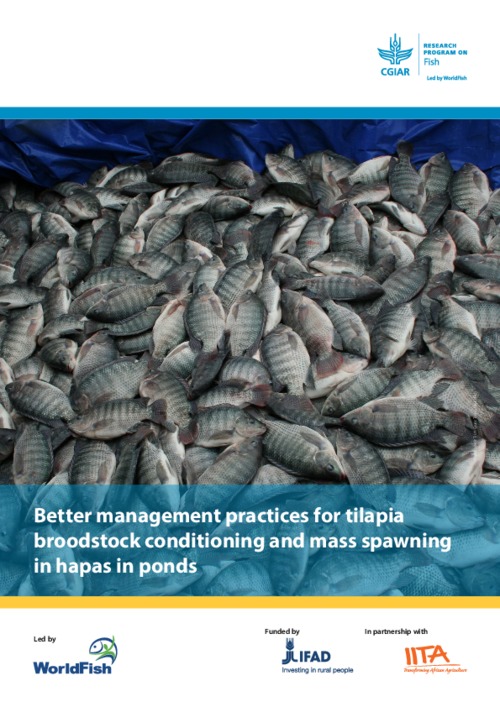Better management practices for tilapia broodstock conditioning and mass spawning in hapas in ponds

The hapa-in-pond system hatchery technique has been widely adopted and used in hatcheries throughout Asia. It has also been used in Africa, but the practice is still limited in many countries, including the Democratic Republic of Congo, where there is hardly any existing systematic production of quality fry and fingerlings for tilapia. In cooperation with the International Institute of Tropical Agriculture (IITA) in Bukavu and Kinshasa, WorldFish has worked to build the capacities of technicians and hatchery operators from the hatchery sites in the country. The partnership has helped increase access to high-quality aquaculture inputs—specifically seed and feed. These guidelines were initially developed to optimize the conditioning and spawning of fish for improved fry production used in research but also in fry and fingerling production for the two regions where the hatcheries are situated. In broodstock conditioning, it is important that fish intended for spawning are allowed to rest for a short period to give gametes (sperm for males and eggs for females) time to mature. During this period, fish must be nurtured well and fed a diet that shortens the maturation period. In addition, it is necessary to separate male tilapia from the females to allow for synchronous spawning.
Permalink
Date Available
Type
Publisher
Copyright
CC-BY-NC-4.0
Research Themes
Topics
Language